Discover the fascinating survival strategy of elephant herds—bunching behavior. From protecting calves against predators to symbolizing deep family bonds, bunching showcases the intelligence and unity of elephants. However, threats like poaching and habitat loss disrupt these vital instincts, underscoring the need for conservation. Explore these majestic creatures with Kijani Tours and witness their intricate social dynamics firsthand. Embrace responsible tourism and connect with the heart of nature's narrative.
Walking Safaris: Discover the Hidden Tracks Beneath Your Feet
Unlock the Secrets of the African Savanna
Are you ready for an adventure that will awaken your senses and deepen your connection to nature? Explore the African savanna on foot, where every step offers a new surprise that captivates your curiosity. Imagine inhaling the earthy aromas of the wilderness, listening to the symphony of wildlife, and witnessing breathtaking landscapes firsthand. This immersive experience allows you to slow down and truly appreciate the intricate details of your surroundings.
As you stroll through this vibrant ecosystem, you will gain insights into the delicate balance of nature and forge connections with the wildlife that call this land home. Join us for an unforgettable journey that promises to create lasting memories—ones that will stay with you long after the adventure ends. Are you ready to embrace the savanna’s wonders?
A Short History of Walking Safaris in Tanzania
Walking safaris in Tanzania offer a captivating blend of adventure and connection to nature, with roots in early exploration and conservation. Pioneered by figures like Bernhard and Michael Grzimek in the mid-20th century, this unique experience has become integral to Tanzania's tourism, thanks to stunning locations like the Serengeti and Ngorongoro Crater. Unlike traditional game drives, these guided excursions allow travelers to immerse themselves in the wilderness on foot, learning about the local flora and fauna from experienced rangers and guides. Whether short walks near camps or multi-day treks with mobile support, walking safaris provide a profound appreciation for the African landscape and its vibrant wildlife.
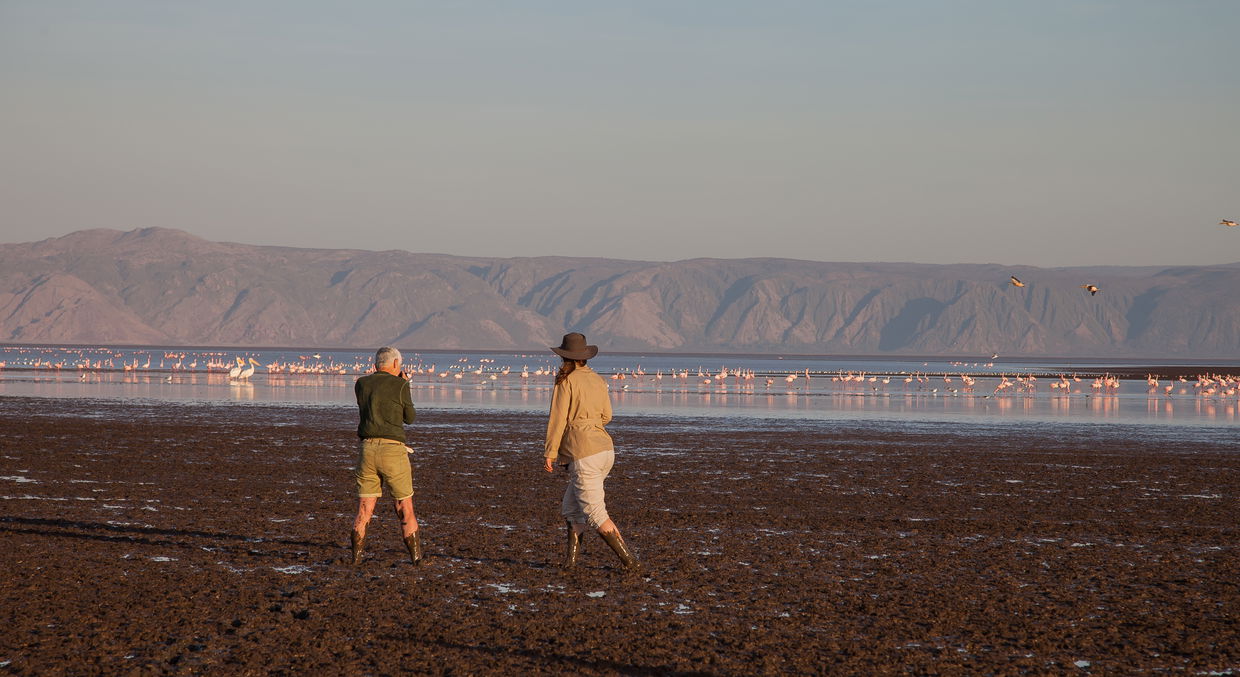
Top destinations for walking safari in Tanzania
Tanzania presents a variety of captivating destinations for walking safaris, each offering a distinct experience. The Ngorongoro Crater, recognized as a UNESCO World Heritage Site, showcases breathtaking landscapes and a rich array of wildlife. Tarangire National Park is famed for its massive elephant herds and ancient baobab trees, while Makuyuni Wildlife Park provides a more private safari experience. The West Kilimanjaro area, which is community-owned, grants access to stunning, untouched nature at the base of Mount Kilimanjaro. Mahale Mountains National Park is notable for its significant chimpanzee population, and both Selous Game Reserve and Ruaha National Park offer remote, adventurous settings ideal for walking safaris. These locations enable visitors to connect with nature and observe animals in their natural environments.
What to Pack for an Unforgettable Walking Safari?
When preparing for a walking safari in Tanzania, it is essential to pack lightweight, breathable clothing such as T-shirts, long-sleeve shirts for sun protection, convertible pants for versatility, comfortable shorts for hotter days, and a lightweight jacket or fleece for cooler evenings. Go for neutral colors like khaki, olive, and brown to better blend in with the environment. Comfortable footwear is crucial; sturdy, broken-in hiking boots and moisture-wicking socks are recommended, along with sandals for downtime. Essential safari gear includes binoculars for wildlife viewing, a camera with extra memory cards and batteries, a small daypack for carrying essentials, and a reusable water bottle to stay hydrated. Personal items should consist of travel-sized toiletries, high-SPF sunscreen, protective hats, sunglasses, and insect repellent. Additional considerations include dressing in layers to accommodate varying weather, bringing lightweight rain gear, a basic first aid kit, and a guidebook or field guide for wildlife identification. By packing these essentials, you will be well-prepared for an unforgettable safari experience.
Types of Walking Safari
1. Short Guided Walks:
If you are looking to immerse yourself in the wonders of nature while enjoying a relaxed outing, our Short Guided Walks are perfect for you. Ideal for beginners, these engaging walking safaris last just a few hours and cover shorter distances, allowing you to savor every moment. With experienced guides leading the way, you’ll dive deep into the fascinating details of the bush, discovering the intricate world of plants, insects, and birds, as well as learning to identify tracks left behind by wildlife. Ideal for beginners, these walks typically last a few hours and cover shorter distances. They focus on learning about the smaller details of the bush, such as plants, insects, birds, and tracks.
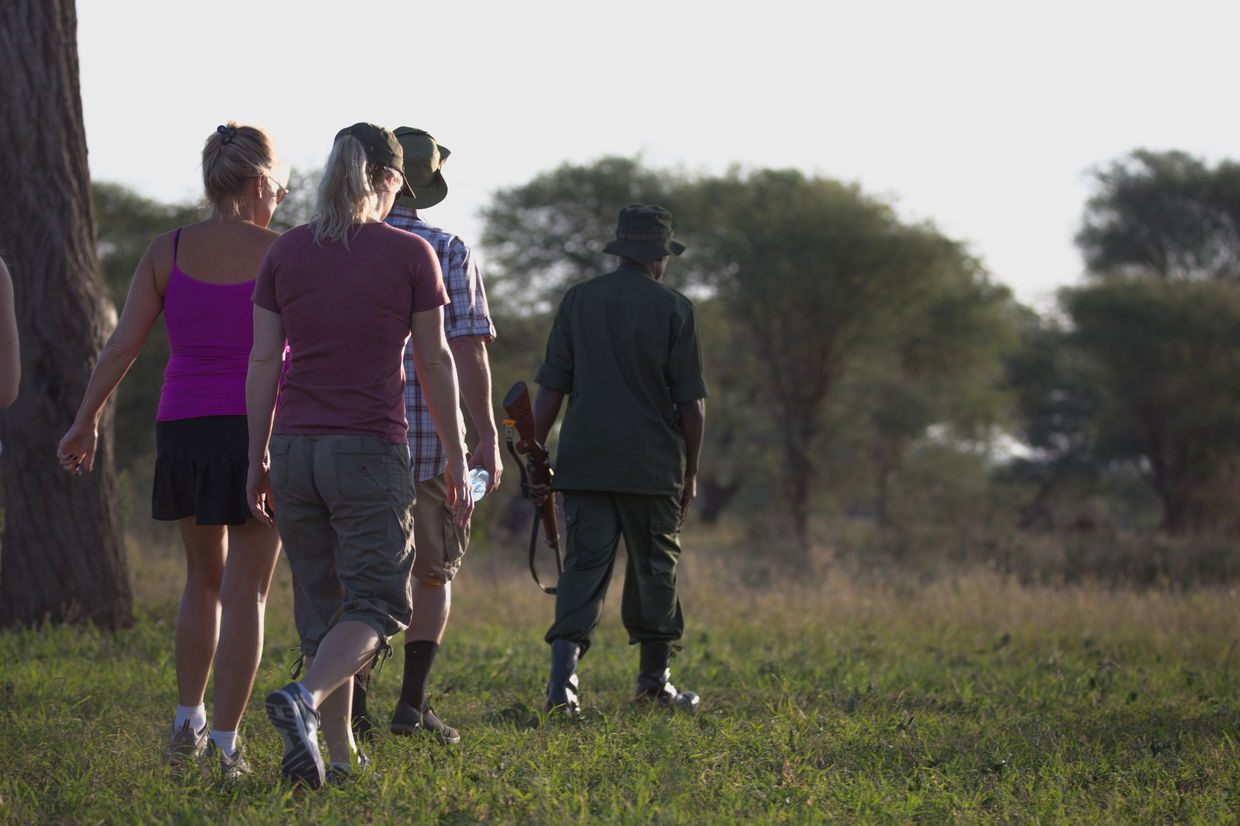
2. Extended Walking Safaris:
Imagine immersing yourself in the heart of nature with our Extended Walking Safaris, where each day unfolds a new chapter of adventure. Over several days, you’ll navigate throughbreathtaking landscapes, setting up camp under the stars while indulging in the serene sounds of the wilderness. This isn’t just a trip; it’s a transformative journey that connects you deeply with the ecosystem, allowing you to witness the intricate rhythms of the bush up close. Our expert guides will share their knowledge, ensuring you leave not only with unforgettable memories but also a profound appreciation for the natural world. Don’t miss the chance to experience the wild like never before.
3. Specialized Walking Safaris:
Explore the unparalleled beauty of nature with our Specialized Walking Safaris, designed to immerse you in the rich tapestry of wildlife and stunning landscapes. Tailored specifically to cater to your interests, whether birdwatching, photography or a deep dive into unique ecosystems, these safaris provide a bespoke experience that goes beyond the typical adventure. The expert guides and rangers, equipped with extensive knowledge and a passion for the environment, ensure that each step you take is filled with discovery and engagement.
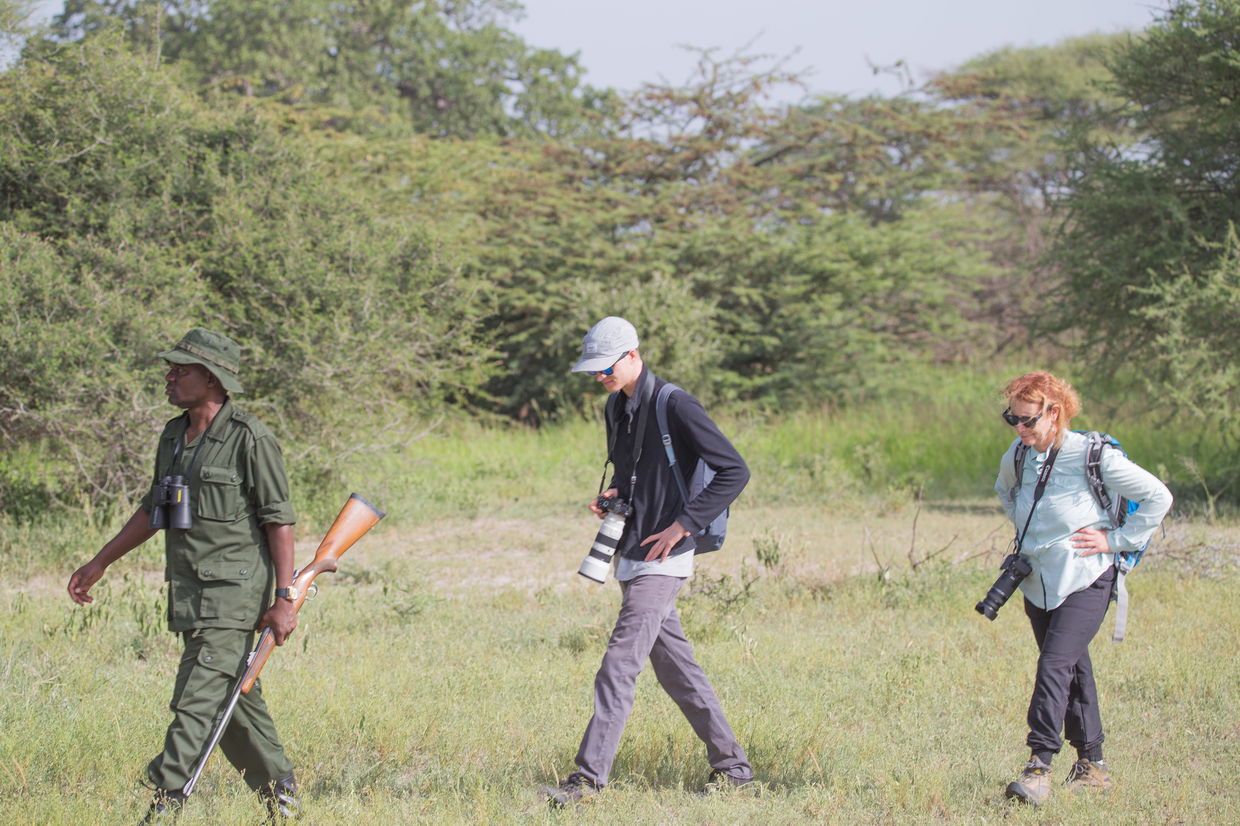
Safety precautions and guidelines
Safety is paramount on walking safaris. Here are some key guidelines:
1. Listen closely to your guides
2. Understand that encounters with large predators may be limited for safety reasons
3. Stay with the group at all times
4. Follow the instructions of your Walking Guide and armed Ranger
Tracking of Wildlife
Tracking wildlife is a fundamental aspect of walking safaris. It involves interpreting signs left by animals, such as footprints, droppings, and feeding marks, to locate and observe them. Tracking requires keen observation skills and an understanding of animal behavior.

Key Skills for Tracking Wildlife
1. Spoor
Spoor refers to the tracks, scents, and other signs left by animals as they move through their environment. During a walking safari, tracking spoor is a crucial skill that helps guides and trackers locate and identify wildlife. Spoor can include footprints, droppings, broken branches, and even disturbed soil. By carefully observing these signs, trackers can determine the type of animal, its direction of movement, and sometimes even its behavior. This skill requires keen observation, patience, and a deep understanding of animal behavior, making the experience of tracking wildlife on foot both challenging and rewarding.
2. Observation:
Observation is a key skill for successful tracking during a walking safari. Paying close attention to details such as animal tracks, sounds, and smells can provide valuable clues about the presence and movements of wildlife. By honing your observational skills, you can detect subtle signs that might otherwise go unnoticed, enhancing your ability to locate and approach animals. This heightened awareness not only enriches the safari experience but also ensures a respectful and safe interaction with the natural environment.
3. Patience:
Patience is a vital trait when it comes to tracking wildlife during a walking safari. It requires a calm and persistent approach, as locating and approaching animals can often take time. Observing subtle signs, such as tracks and droppings, and waiting quietly for animals to appear demands both dedication and a steady demeanor. This patience not only enhances the chances of successful sightings but also ensures a respectful and non-intrusive interaction with the natural world.
4. Knowledge of Animal Behavior:
Understanding animal behavior is crucial during a walking safari. It involves knowing how animals move, feed, and interact with their environment, which helps predict their movements and locate them. This knowledge enhances the safari experience by allowing you to observe wildlife more closely and safely. For instance, recognizing signs like tracks, droppings, and feeding marks can lead to exciting discoveries. Additionally, understanding animal behavior ensures that you maintain a safe distance and avoid disturbing the animals, making the experience enjoyable and respectful for both you and the wildlife.
5. Safety Awareness:
Safety awareness is crucial throughout walking safaris. It involves being mindful of your surroundings, understanding potential risks, and following guidelines to ensure your well-being. This includes staying close to your guide, maintaining a safe distance from wildlife, and being prepared for various environmental conditions. By prioritizing safety, you can fully enjoy the adventure while minimizing risks to yourself and the natural habitat.
Exploring the wilderness on foot offers numerous benefits:
1. Enhanced sensory experience:
Experience a walking safari that invites you to immerse yourself in nature's wonders. As you wander through the wilderness, let the sounds of rustling leaves and animal calls capture your attention. Breathe in the rich, earthy aromas mingling with the fresh scents of vibrant plants, grounding you in this dynamic ecosystem. Feel the varied textures of the ground beneath your feet, from soft moss to rugged stones, enhancing your connection to the landscape. This adventure transcends visuals—it's a sensory journey that creates unforgettable memories of the great outdoors.
2. Improved wildlife observation:
Go on an unforgettable walking safari that reveals the enchanting world of wildlife beyond the usual big game. This immersive journey allows you to discover the often-overlooked smaller creatures that play essential roles in the ecosystem. While exploring pristine landscapes, you'll observe animal behavior in its natural habitat, gaining insights into their lives that typical vehicle tours miss. Under expert guidance, you'll learn vital tracking and survival skills that enhance your connection to nature. Join us for this thrilling adventure, where every step unveils new wonders and deepens your appreciation for the intricate tapestry of life around you.
3. Deeper connection with nature:
In our fast-paced, technology-driven lives, it’s crucial to take a step back and embrace the beauty of nature. Dedicating time to disconnect from screens allows you to immerse yourself in the environment, rejuvenate your spirit, and connect with the intricate ecosystems that sustain us. Join us on a journey to experience the tranquility and richness of the natural world, fostering a stronger bond with the earth and promoting a sustainable future. Let’s celebrate the splendid complexities of our world together.
4. Educational opportunities:
Going on an educational walking safari where you will explore the wonders of nature alongside knowledgeable guides and rangers. This experience explores animal behavior and habitats, offering insights that deepen your understanding of the ecosystem. You will also discover the rich diversity of flora and fauna in our environment. Don't miss this chance to connect with nature and expand your knowledge.
5. Unique perspectives:
Get ready to ditch the safari jeep and hop into a world where nature is your VIP guide. Our safari takes you off the beaten path to spots that traditional vehicles can only dream of reaching. You will rub elbows with wildlife in their natural habitat—not behind the glass of a safari van. Picture unforgettable moments as you connect with the ecosystem and create memories that will score some serious bragging rights. Join us for an adventure that promises to be wilder than your last family reunion
6. Cultural Interactions
Experiencing the Hadzabe tribe on a walking safari in Tanzania offers a unique chance to engage with one of Africa's last hunter-gatherer cultures. Located near Lake Eyasi, the Hadzabe's way of life has persisted for thousands of years. Participating in their daily routines—such as hunting and foraging—provides insight into their sustainable practices and connection to nature. Additionally, encountering the Maasai people adds to the experience, as you learn about their traditions and daily activities like cattle herding and beadwork. This journey not only broadens your understanding of cultural diversity but also supports the preservation of these ancient ways of life.
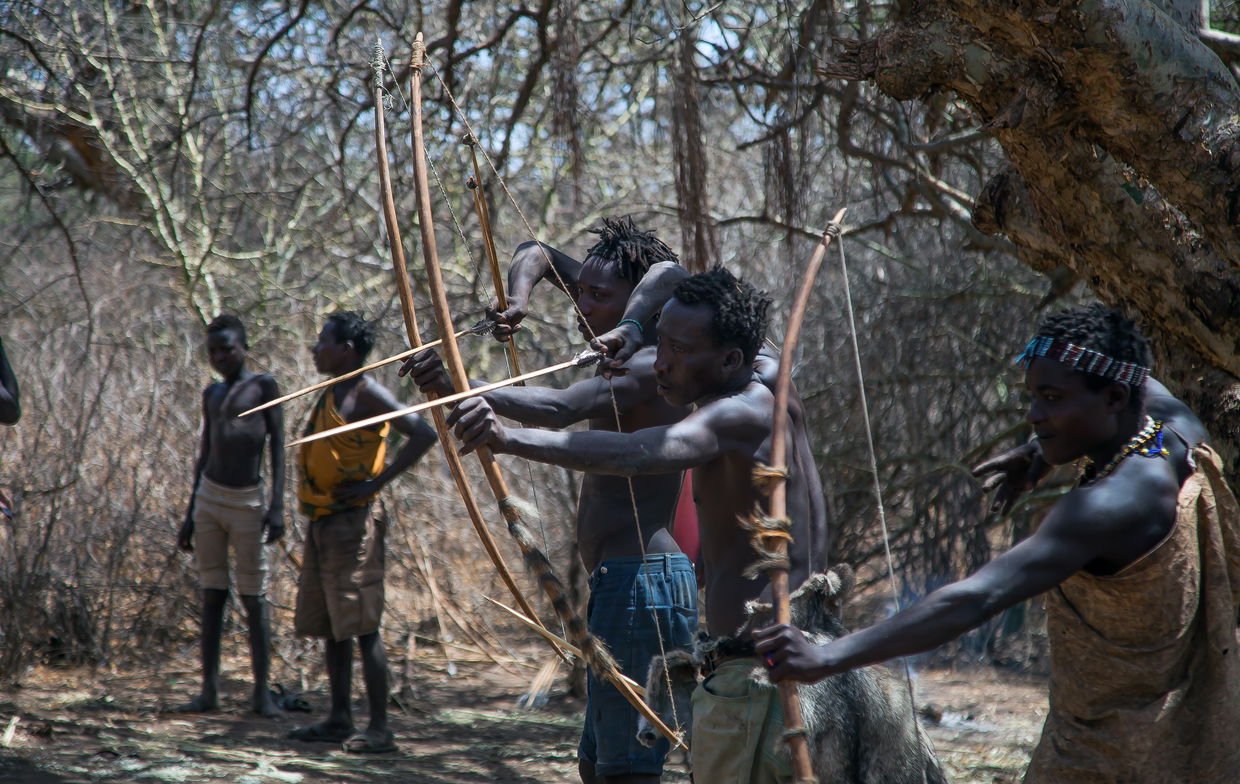
Impacts of walking safaris
Walking safaris present an eco-friendly alternative to traditional vehicle safaris, adhering to sustainable tourism by decreasing carbon footprints, minimizing wildlife habitat disturbance, and fostering responsible resource management. In Tanzania, conservation efforts are supported through anti-poaching initiatives, habitat restoration, and community education programs. Travelers can actively contribute by selecting certified eco-friendly lodges, engaging in conservation workshops, and participating in community-based cultural experiences.
Challenges of Tracking Wildlife
Tracking wildlife presents several challenges. Environmental factors like weather can obscure tracks; while the dry season offers better visibility, the wet season attracts more migratory birds, enhancing the experience. Animal behavior also complicates tracking since they often become elusive in response to human presence. Additionally, navigating through dense vegetation or rough terrain can make tracking physically demanding.
The Use of Technology on Walking Safari to Track Wildlife
Technology is transforming the walking safari experience and wildlife tracking in remarkable ways. By utilizing GPS devices, guides can efficiently navigate and track animal movements, leading to more successful safaris. Camera traps strategically placed in the wild provide invaluable insights into wildlife behavior through captured images and videos. Drones enhance this experience further by offering a bird’s-eye view, allowing guides to monitor animals' movements from afar. Additionally, mobile apps like the Serengeti Animal Tracker provide real-time data on animal sightings and tracks, streamlining the tracking process. Embracing these technologies not only elevates the safari experience but also fosters a deeper connection with nature.
Conclusion
A walking safari is not just a trip—it is a transformation. It I s a chance to step into the wild, away from the noise of daily life, and reconnect with something bigger than yourself. Kijani Tours invites you to explore this life-changing experience. Feel the Earth beneath your feet, stand face to face with nature's giants, and see the world in a way you never thought possible. Step out of your comfort zone—it might just change you forever.
Unlock More Insights
The Great Migration is a breathtaking event in nature, with over 1.5 million wildebeests, zebras, and gazelles traversing the Serengeti-Mara ecosystem. Each year, these animals confront the perilous Mara River, home to hungry crocodiles, where hesitation mixes fear with survival instinct. The migration is driven by seasonal rains that dictate grazing availability, underscoring the delicate balance of the ecosystem, with predators like lions playing a crucial role in this dynamic. As wildebeests...
Facts About Mount Kilimanjaro takes readers on an inspiring journey into the wonders of this iconic peak. As the world's tallest free-standing mountain, Kilimanjaro captivates with its towering height of 5,895 meters and unique volcanic cones—Kibo, Mawenzi, and Shira. The mountain's diverse ecosystems showcase five climate zones, from lush rainforests to icy arctic conditions, supporting rich biodiversity and endemic species. The melting glaciers highlight the urgent impact of climate change, while Kilimanjaro's...

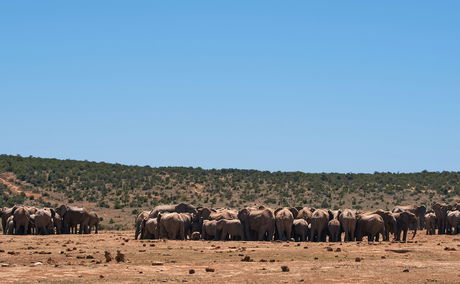
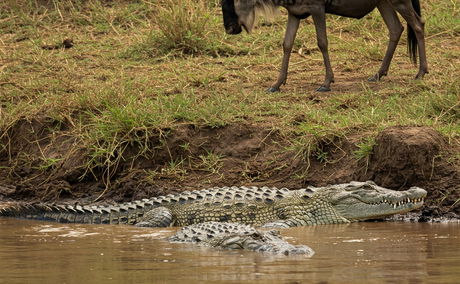
Share This Post